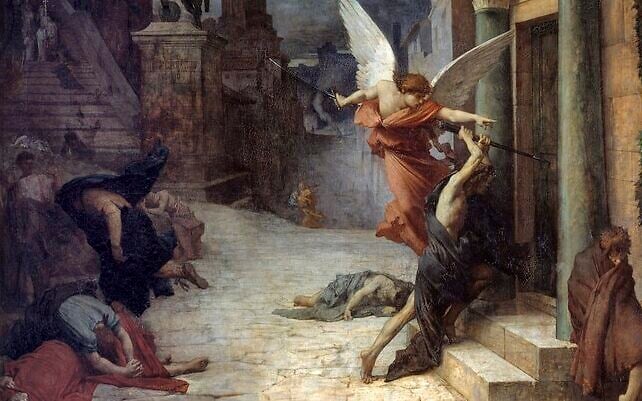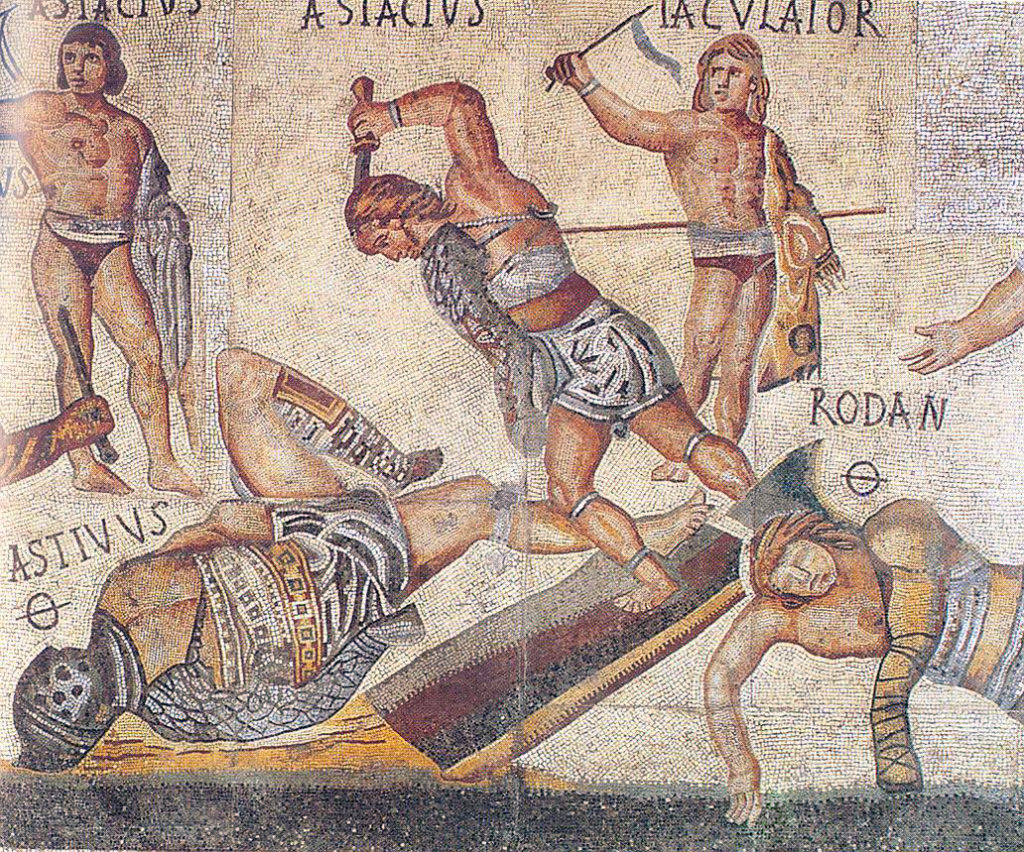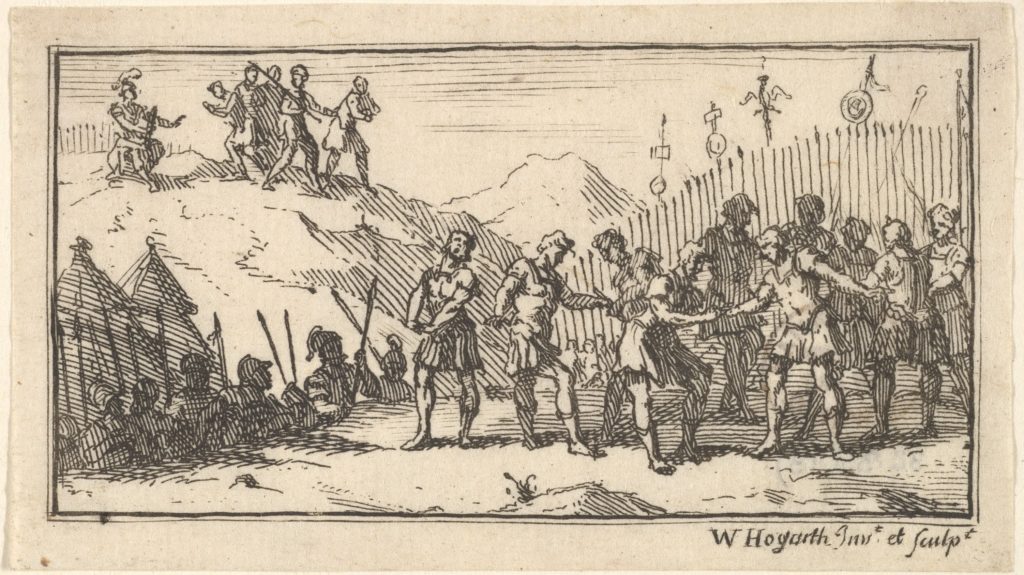Last updated on August 21st, 2025 at 08:45 pm
2020 was the first time most of us experienced a global outbreak. The entire world seemingly ground to a halt. Despite the devastating loss of life, it wasn’t the first time that a pandemic threatened our global order.
Human history is full of examples of diseases that have run amok, claiming innumerable lives and affecting the way we function.
Every era, from modern to medieval, has grappled with its own pandemics. One of the earliest instances of a devastating pandemic is the Antonine Plague, which struck the world when the Roman Empire was at its height.
Without modern vaccines and antibiotics, the Antonine Plague ripped through the ancient world, showing that even the mightiest civilizations and emperors are vulnerable to invisible, microscopic pathogens.

How the Antonine Plague Ravished the Roman Empire
For most readers, the term plague is associated with the Black Death, the 14th-century bubonic plague that decimated Europe.
The Antonine Plague, despite its name, was not actually an outbreak of the bubonic plague. Its symptoms were different from the Black Death and have been recorded by contemporary physicians and historians.
The Antonine Plague was a pandemic that lasted for at least 15 years, from 165 AD to 180 AD. One of the most authoritative sources of the period, the Greek physician Galen, had firsthand knowledge from treating patients suffering from the disease.
Galen referenced the Antonine Plague and recorded the symptoms of the disease in his many medical treatises. Since Galen was among the foremost physicians of the era, he recorded the spread and effects of the pandemic. Sometimes referred to as the Plague of Galen, the scholar noted the following symptoms:
- Fever
- Diarrhea
- Vomiting
- Pharyngitis (swelling of the throat)
- Exanthema (rash covering the entire body)
- Internal and external ulcerations
- Catarrh (inflammation of the sinuses and airways)
Galen also noted the disease’s extended duration and its tendency to claim the lives of those afflicted. He found ways to predict whether a patient would survive, such as noting the color of the patient’s exanthema and stools.
Historians have primarily relied on Galen’s accounts to deduce which disease was behind the outbreak. The broad consensus believes it was smallpox with a minority suggesting it was measles.
Smallpox was completely unheard of in the Mediterranean during the second century. When it struck the Roman Empire, the people had no natural immunity, which helped it spread quickly and kill indiscriminately. Nobody was spared, from the lowest commoners to Roman Emperors.
It’s believed that the co-emperor of Rome, Lucius Verus, who ruled alongside the better-known Marcus Aurelius, died in 169 AD as a result of the Antonine Plague.
When the disease struck the Roman Empire, Marcus Aurelius and Lucius Verus were the rulers. Both co-emperors were the adopted sons and successors of the emperor Antoninus Pius. The disease was named after their family, which is why we refer to it as the Antonine Plague.
First Outbreak
The Antonine Plague is believed to have originated in Central Asia. In 165 AD, Lucius Verus laid siege to the Parthian city of Seleucia. Legend has it that Verus desecrated a sacred tomb while sacking the city, unleashing a curse that became the Antonine Plague.
Whether or not you believe in its supernatural origins, it’s clear that the legionaries involved in the Verus’ Parthian campaign were the first to contract the disease.
In 166 AD, the Roman-Parthian War resulted in a Roman victory. Following tradition, the city celebrated. Soldiers participated in a parade that wound through Rome’s most important landmarks as citizens cheered.
When you throw a highly contagious disease into the mix, you have all the ingredients for a full-blown epidemic.
The Antoine Plague firmly took root in the Roman Empire in 166 AD and lasted until 168 AD, periodically returning in waves until 180 AD.
Second Outbreak
Unfortunately for the people of Rome, the disease was not done with them just yet. A few years later, in 189 AD, the Antonine Plague returned in full force.
This time, it struck the capital, Rome, exceptionally hard. The historian Cassius Dio, who lived through both outbreaks, wrote that it claimed as many as 2,000 lives per day in Rome during 189 AD.
It’s difficult to count exactly how many lives were lost during the Antonine Plague. Some experts believe that the first outbreak, between 165 AD and 168 AD, claimed between five to 10 million lives alone.
If we consider the separate outbreaks during the reigns of Marcus Aurelius and his successor Commodus, that figure is even higher.
According to Cassius Dio, the Antonine Plague killed at least one out of four people infected. With a 25% fatality, the Antonine Plague is believed to have killed at least 10% of the entire population of the Roman Empire. The densely populated cities and legions of the Roman Army were among the worst-hit groups.
Disease and Decline: The Antonine Plague’s Effect on Roman Society
History fondly recalls the reign of Marcus Aurelius. He is considered the last of the “Five Good Emperors,” and his writings on stoicism have earned him the reputation of a philosopher-king.
However, the spread of the Antonine Plague during his rule exposed the growing weaknesses of the Roman Empire. Though Marcus Aurelius’ reign is referred to as a high point in Rome’s Imperial period, the signs of the empire’s imminent decline were becoming clearer as the Antonine Plague continued to spread.
Understanding the Cause of the Antonine Plague
Military strength, profitable trade routes, and urbanization were the three chief means that Rome used to exert influence across the Mediterranean, continental Europe, and the Near East.
After centuries of Roman dominance, these same factors would also cripple the Empire by facilitating the spread of the Antonine Plague.
The Roman legions were considered the finest fighting force in the ancient world, but even they were no match for an invisible foe in the form of smallpox. The legions were highly mobile, moving around the Empire to carry out campaigns by the Roman war machine. This made them ideal carriers of the disease as they reached even the far-flung corners of the Empire.
Rome’s bustling trade networks also helped spread the plague. The flow of goods across the Empire was accompanied by the transmission of disease. Finally, the densely packed cities, with Rome being the prime example, were the ideal places for the illness to take root and infect large swathes of the population in a very short time.
Though the Roman Empire was a model of efficiency in the ancient world, the same quality created the perfect conditions for the Antonine Plague to rip through the Empire at a frightening pace.
The End of Pax Romana
Pax Romana is a period of roughly 200 years that has been considered the golden era of the Roman Empire. Most historians agree that Pax Romana came to a close at the end of Marcus Aurelius’ reign in 180 AD. While the Roman Empire lived on for several centuries after Marcus Aurelius’ death, it would never again reach the heights it used to occupy in the ancient world.
It’s worth noting that Pax Romana’s conclusion also coincides with the spread of the Antonine Plague. The pandemic had profound effects on nearly every sphere of Roman life, and altered its most famous institutions in unforeseen ways.
Military Effects
Roman soldiers were among the most vulnerable. While the legions were suffering from repeated outbreaks, the Germanic tribes invaded Italy, kicking off the Marcomannic Wars.
Facing a severe shortage of military manpower, Marcus Aurelius had to recruit additional legionaries from suspect sources, such as slaves, gladiators, and prisoners.
Still, this hastily assembled army lacked the professionalism of the older Roman legions, and it marked the first time barbarians set foot on Roman territory in over 200 years. Though the legions finally repelled the tribesmen in 171 AD, this led to a loss in prestige and affected their fearsome reputation.
Economic Effects
The Antonine Plague also exacted a steep death toll from the civilian population, kicking off a chain reaction. Fewer citizens meant fewer people left to work on farms or as craftsmen.
This had a chilling effect on the Roman economy. To make matters worse, the number of deaths meant there were fewer taxpayers left alive to provide additional revenue.
Since the disease killed indiscriminately, it also caused the deaths of many government officials and patricians, halting the functioning of government at the local, provincial, and imperial levels.
Religious Effects
During the Antonine Plague, superstitious Romans sought to pin the blame on Christians. They believed the Christians’ monotheistic beliefs were angering the polytheistic Roman pantheon, and that the pandemic was a punishment from the gods.
Despite these beliefs, the Christian faith endured the persecution and gained greater acceptance in Rome. Christian tenets like salvation and heaven must have comforted the people at a time when life was most uncertain.
Every pandemic leaves its mark on the world. The Antonine Plague is no different. Within the space of just two decades, it laid the foundation for the eventual downfall of the Roman Empire, while teaching future generations about the devastating power of disease.

